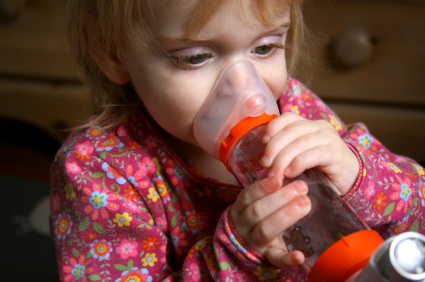Abstract
Li DK, Chen H, Odouli R. Maternal Exposure to Magnetic Fields During Pregnancy in Relation to the Risk of Asthma in Offspring. Arch Pediatr Adolesc Med 2011 Aug 1. [Epub ahead of print]
OBJECTIVE: To determine whether maternal exposure to high levels of magnetic fields (MFs) during pregnancy is associated with the risk of asthma in offspring.
DESIGN: A prospective cohort study.
SETTING: Kaiser Permanente Northern California.
PARTICIPANTS: Pregnant Kaiser Permanente Northern California members in the San Francisco area.
MAIN OUTCOME MEASURES: Asthma was clinically diagnosed among 626 children who were followed up for as long as 13 years. All participants carried a meter to measure their MF levels during pregnancy.
RESULTS: After adjustment for potential confounders, a statistically significant linear dose-response relationship was observed between increasing maternal median daily MF exposure level in pregnancy and an increased risk of asthma in offspring: every 1-mG increase of maternal MF level during pregnancy was associated with a 15% increased rate of asthma in offspring (adjusted hazard ratio [aHR], 1.15; 95% confidence interval [CI], 1.04-1.27). Using the categorical MF level, the results showed a similar dose-response relationship: compared with the children whose mothers had a low MF level (median 24-hour MF level, ≤0.3 mG) during pregnancy, children whose mothers had a high MF level (>2.0 mG) had more than a 3.5-fold increased rate of asthma (aHR, 3.52; 95% CI, 1.68-7.35), while children whose mothers had a medium MF level (>0.3-2.0 mG) had a 74% increased rate of asthma (aHR, 1.74; 95% CI, 0.93-3.25). A statistically significant synergistic interaction was observed between the MF effect and a maternal history of asthma and birth order (firstborn).
CONCLUSION: Our findings provide new epidemiological evidence that high maternal MF levels in pregnancy may increase the risk of asthma in offspring.
ANH-Intl comment
Following the recent report from the International Agency for Research on Cancer (IARC) that classified electromagnetic (E-M) radiation as "possibly carcinogenic to humans", this new research casts the safety of E-M radiation in an even more worrying light.
The new research, published in the Archives of Pediatric and Adolescent Medicine, found that the asthma risk for children born to mothers exposed to E-M radiation – although strictly speaking, the authors measured magnetic field (MF) radiation and not E-M radiation – during pregnancy increased by a whopping 15% for every 1-milliGauss (mG) increase in MF exposure per 24 hours. Children born to mothers with a family history of asthma, and first-born children, were at additional risk of asthma.
Of further concern is the fact that all sources of E-M radiation, from electricity pylons to hairdryers, are implicated in the effect on unborn babies. Lead author, Dr De-Kun Li, said: "The message here is that exposure to electromagnetic fields is not good, and we need to pay attention to its adverse effect on health. Electromagnetic field exposure is ubiquitous so any adverse health effect could cause a serious public health problem.
"The best way to reduce your magnetic field exposure is distance. Pregnant women should try to limit their exposure to known sources and keep [a] distance from them when they are in use."
This finding does not occur in isolation. Previous research has provided a plausible mechanism for the ability of exposure to E-M radiation to increase the risk for various conditions, including cancer. Just read the following concluding points in a 2009 review paper by Olle Johannssen [1]:
- "Both human and animal studies report large immunological changes upon exposure to environmental levels of modern, human-made EMFs. Some of these exposure levels are equivalent to those of wireless technologies in daily life, and often at low or very low (i.e., non-thermal) levels
- Measurable physiological changes (mast cells increases, for example) that are bedrock indicators of allergic response and inflammatory conditions are stimulated by EMF exposures
- Chronic exposure to such factors that increase allergic and inflammatory responses on a continuing basis may be harmful to health. The data presented here, as well as the very rapid international increase in incidence of allergies, asthma and other oversensitivities, together form a clear warning signal"
Dr Li and his co-authors admit that their results require replication before a definite link between asthma and E-M radiation can be confirmed. However, since the causes of asthma remain unclear, these results offer a promising new route for further research. The results appear fairly robust for two reasons. First, since MF radiation was measured in pregnancy, long before an asthma diagnosis was made, the possibility that subjects took part in the study because of the presence of asthma was reduced. Secondly, because MF exposure and asthma diagnosis were measured separately and objectively, subjects were unlikely to suffer from 'recall bias' after they worked out what the exposure and outcome variables were – a common problem in epidemiological studies.
[1] Johanssen O. Pathophysiology 2009; 16: 157–77.








Comments
your voice counts
There are currently no comments on this post.
Your voice counts
We welcome your comments and are very interested in your point of view, but we ask that you keep them relevant to the article, that they be civil and without commercial links. All comments are moderated prior to being published. We reserve the right to edit or not publish comments that we consider abusive or offensive.
There is extra content here from a third party provider. You will be unable to see this content unless you agree to allow Content Cookies. Cookie Preferences